Planning June 2020
‘All We Do, Now and in the Future, Will Be Informed by This Experience.’
Planners from across the country — and the world — reflect on the first weeks of the COVID-19 crisis, their challenges and successes, and what lies ahead.
As Told to Meghan Stromberg and Mary Hammon
Sam Assefa
Director, Office of Planning & Community Development
Seattle

Sam Assefa
I can't think of a better place to be during a pandemic.
While the Seattle region was among the first in the country impacted by COVID-19, we were among the first in the nation to institute the necessary social distancing that has had a crippling impact on the local and national economies and community organizations.
We've been successful at bending the curve — as of late April we had around 100 deaths in a city of 750,000 — but we have done so on the leading edge of the crisis. In some sense, we were the canary in the coal mine.
Our response began immediately, as laid out in the city's disaster response playbook. Our department looked internally to identify the most critical operations that had to continue and what kinds of resources needed to be dedicated to COVID-19 response efforts.
We have paused several significant long-range projects (including an update to Seattle's comprehensive plan) to focus on short-term disaster response efforts and are lending a hand everywhere we can. Our staff members are helping other city agencies that are seeking to serve the communities most impacted. Many on our team have dropped their regular duties to help our office of economic development process and approve applications for emergency financial assistance to small businesses, with a priority on minority-owned businesses.
Our GIS staff, working with Seattle IT, developed an interactive map and an app to support the economic viability of restaurants in the Seattle and broader Puget Sound region that are providing takeout and delivery services during this crisis.
A pivotal focus of our efforts has been to bring an equity lens to our crisis response. COVID-19 is disproportionately impacting people of color and immigrant communities both in terms of health and the impending economic challenges we are facing already.
It is critical for cities to ask who is going to be affected and who is going to benefit from new policies. Recovery should be primarily framed around addressing the people who are — and are going to be — the most impacted. My planning staff brings this perspective to the table not only internally but also in our external conversations with other departments, city leaders, and stakeholders.
In light of projected revenue shortfalls for 2020 (estimated between $150 and $300 million), keeping that focus will be more important than ever as we start thinking of how we fill that budget gap in the next year — and beyond. What do we pause for now? What do we need to start thinking about? What can't we do without? Where can we cut discretionary spending? And what broader impacts do these decisions have on our city and its residents?
There is much to do as we seek to support businesses, organizations, and communities over the short and long term, while also exploring ways in which our land-use planning priorities will be informed by the pandemic and our new economic reality.
David White, FAICP, and Meagan Tuttle, AICP
Director of Planning and Principal Planner, Office of City Planning
Burlington, Vermont
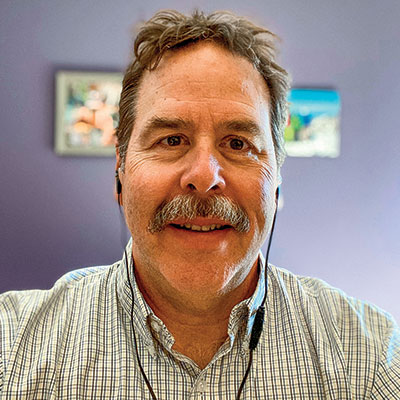
David White, FAICP
It's unbelievable how drastically things can change in the span of a few weeks. Our two-person long-range department spent the beginning of March working on important revisions to the city zoning code, with a focus on regulations related to housing.
As of Friday, March 13, our focus completely changed.
In response to state-level executive orders aimed at flattening the curve, the mayor repurposed our staff to form the nucleus of a COVID-19 Analytics Team. In the weeks since, we have spent all of our (remote) working hours researching best practices and collecting and sharing data to support the decision making of Burlington's Emergency Operations Center and mayor.
We were joined by staff from multiple city departments and formed two working teams — one focused on epidemiology and nonpharmacological interventions, and the other on economic and community impacts and recovery.
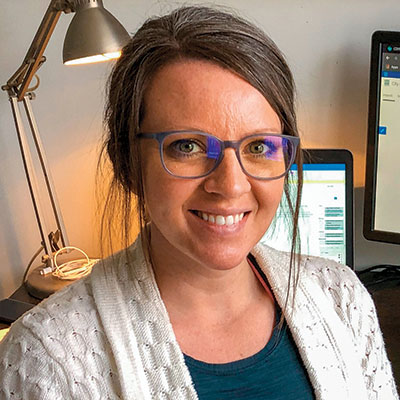
Meagan Tuttle, AICP
In so many ways, it's been like drinking from a firehose. While the nature of our work as planners is similar in terms of research and analysis, the pace is much faster and the urgency greater. Where we might normally work with the planning commission on a land-use issue over a couple of months, we now turn requests around in a matter of days or even hours.
As of late April, we had prepared more than two dozen memos on a wide range of topics, many of which are posted on the city's website for use by other communities throughout Vermont — and hopefully beyond. We have also begun research to inform how the city moves forward.
Even at just under 43,000 population, Burlington is the largest city in Vermont and represents a third of our region's housing and jobs. While things will affect us differently than other parts of the state, our urban perspective provides important and actionable insights for smaller places.
As focus begins to shift from response to recovery, we find it hopeful that, thanks to the kind of core work planners do, we will still be an essential part as our city seeks to adapt to the changes and impacts from the pandemic and — ultimately — grow more resilient.
Anita Laremont
Executive Director, Department of City Planning
New York City
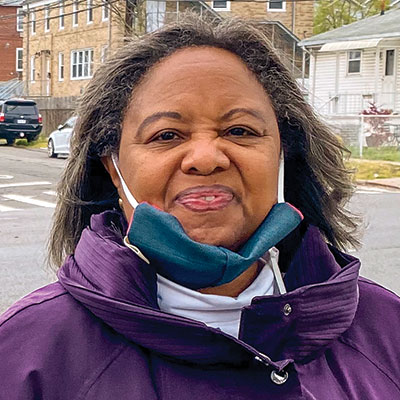
Anita Laremont
As of late April, experts think New York City might be past our peak. But getting to this point was almost otherworldly. What you would see every day was frightening and horrible. While we are not out of the woods, people have begun thinking about the future, when we can get back to some semblance of normality, and what that will mean as we move forward.
I am working from my home on Staten Island's North Shore, where I have been isolating with my family since March 16, when our department began working remotely. With 310 staff members and multiple divisions — zoning, capital planning, regional planning and strategic planning, urban design, transportation, our borough offices, and all of our support staff — the process went surprisingly smoothly.
I'm proud of my staff 's flexibility and willingness to step outside their normal duties and support the city's efforts amid the crisis. We have frequently been asked by city hall to do research and analysis of data to support the city's emergency response. Staff members have volunteered for other city departments, from calling health care workers to recruit them to New York City's hospitals to pitching in to deliver food to New Yorkers unable to access it.
As we look to the future, many of the basic lenses our department uses in planning will likely remain. Ensuring economic vibrancy of the city is one, and pushing to build equity into our system is a critical part of that. Likewise, challenges we faced prior to the pandemic, such as affordable housing, will not have gone away. In many cases, they might be magnified.
The fiscal outlook of the Metropolitan Transportation Authority is particularly bad. Subway and bus ridership dropped 95 percent as residents sheltered in place. But even when restrictions are lifted, there will need to be some employment of physical distancing, which will likely require significantly less dense usage of both the subways and the buses — at least in the short term. The problem is massive, and currently there is no solution on the table.
This intersection of public health and planning is one area I believe will have heightened emphasis in a post-COVID-19 world. It's important for that to become incorporated as part of what we look at in every way from a planning perspective: What does it mean to be physically distant in a dense city? What does it mean when you have to live in your apartment in isolation? Should we be thinking differently about open space and public space? Should we be requiring housing units to have greater access to light and air?
All of these things, and the way we plan our cities in the future, will be informed by this experience.
Michelle Haynes
Planning and Development Services Director
Mountain Village, Colorado
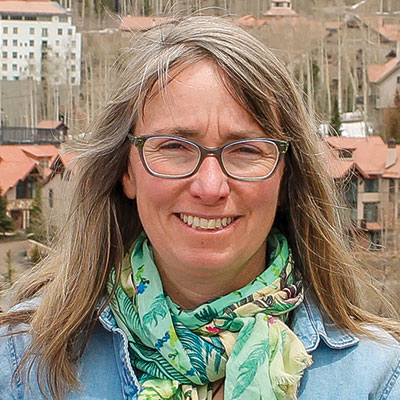
Michelle Haynes
Mountain Village is a small resort community near Telluride that includes a ski area and about a 1,500 population year-round.
Between the ski season and summer festival season, our economy is heavily dependent on tourism. As of mid-April, four major festivals had been canceled through July because of state and local shelter-in-place orders and social distancing requirements, which is having a huge impact on local businesses, both in Mountain Village and nearby towns. Suddenly our tourist-based economy has been suspended, and hundreds of people are out of work.
Our mayor, local officials, and town staff are actively seeking ways to assist small businesses in our community. We're also working on housing assistance and other interventions to help keep people in place and mitigate stress on our community as we ride out this crisis together.
To support our workforce who live in rental housing, we waived April rent at our 220-unit Village Court Apartments (VCA) complex, owned by the Mountain Village Housing Authority, which gave people some breathing room until we could launch a rent deferral plan beginning in May.
We also installed free wifi at VCA and provided free cable internet to families who could not otherwise afford it but who were required to have their children learn via online school. We've also worked with the local school district to deliver free school lunches. And to offset the burden on the local food bank and further ensure access to nutritious food, the town also moved up the launch of our annual summer Community Supported Agriculture program and are providing low-cost (a $25 application fee only) weekly CSA shares to more than 80 families living in deed-restricted housing.
I'm really proud of our town's ability to adapt in the face of this crisis. I think it's a good thing for everyone to remember that we can always care for people at this level, even when COVID-19 is behind us.
John Taylor Jr.
Planning Director
Kiawah Island, South Carolina

John Taylor Jr.
Kiawah Island is a town within Charleston County, just off the coast of South Carolina. We're known as a residential community, but we are also home to a world-class golf resort. Between our natural beach setting and the resort amenities, we attract a lot of visitors.
During April, we would normally start to see our annual influx of seasonal residents and guests, which can push our population from around 1,700 to upwards of 10,000 people during the peak season — Memorial Day to Labor Day. But between state and local emergency ordinances in response to the pandemic, we've not seen the typical growth so far.
From a day-to-day perspective, my planning activities haven't been impacted drastically. Most of our permitting and application functions are online anyway, so as the town's sole planner, I'm able to work from home easily. We had our first virtual commission meeting in April, and the transition online has gone well.
Looking ahead, however, there are still a lot of unknowns. We're due to begin the five-year review of our comprehensive plan this year; we like to do our public outreach in the summertime because we can engage with a greater number of residents and visitors. What that will look like if the restrictions extend longer into summer? Also unclear are the impacts to local small businesses, the resort — a major employer for the area — their employees, as well as what that will mean for the town budget and public services.
On the flip side, if restrictions are lifted and people flock into the community from other states, might that put residents and the local hospitality and tourism industry at greater risk? The start of hurricane season this summer into fall could potentially add another layer of complexity as well, as we gear up our emergency preparedness efforts.
In that regard, as of late April, we're still in wait-and-see mode.
Karen D. Hamilton
Principal, Plan E-Vation
New York, New York

Karen D. Hamilton
Think about what we do when we're faced with uncertainty. We want to hold on to the past. But we need to be less rigid, more flexible, more innovative, and less mired in tradition. I think that this is an important opportunity to better understand how some of the things happening now may be failures of policies of the past.
Take homelessness. Today local governments are opening up hotel rooms and other spaces, things that arguably we could have been doing all along. The rules just kind of got waived. There's no time for NIMBY; they're just doing what they need to do. At the same time, as people are being laid off now, and not able to pay rent, people might realize that that path to homelessness is not this "other" problem anymore. The distance is narrowing.
This crisis has also really caused us to rethink the products and materials that we use, where they're coming from, and how that flow is being interrupted now. Local and regional manufacturing has increased, particularly with 3-D printing. People are making sanitizers, masks, and other PPE. Many people have a side hustle. How do you formalize that hustle? These are some of the areas of focus for my practice, and they could make the difference between community self-sufficiency or poverty.
I'm glad that I was in New York City for a crisis like this, despite everything. I've never really been bothered by uncertainty, even though this is a large degree of uncertainty. I focus on the things within my control. I can research, I can write, I can share information. I can come up with ideas to create the world that I would like to see, but for me personally, there is no value in me being anxious. We're going to have to adapt, and I hope that we have long memories.
Suzanne Schwab, AICP
Land Use and Planning Director, Providence St. Joseph Health
Irvine, California
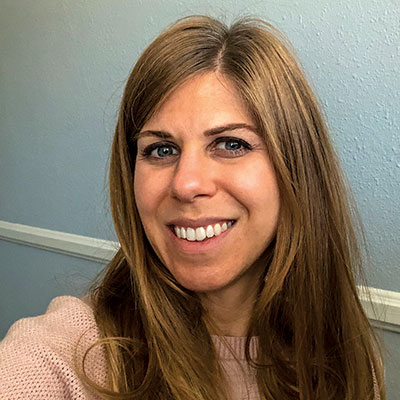
Suzanne Schwab, AICP
I come from a family of medical professionals. My grandma is a nurse. My mom is a nurse. My aunt is a pharmacist. I've worked for Providence St. Joseph Health for a year. We have hospitals all over the West Coast, in seven states.
When this first started, there was definitely a moment where everything felt like PANDEMIC, in big capital letters. And I thought: My job is so fulfilling and there are so many interesting things I do, but I don't feel like I'm helping. Master plans for campuses just don't seem as critical right now, and I don't exactly have a backup nursing degree.
I started talking to my colleagues in different departments, including government affairs, and our department vice president, and he said, "Tell me what it is you think you can do." We were hearing about field hospitals starting to pop up and drive-up testing sites in tents. And I said, look, I can talk to any jurisdiction any day of the week. I know planners across the West Coast. I can do entitlements and permitting. So, that's how I started tracking alternative care sites and doing advocacy for the areas where Providence St Joseph's has hospitals, knowing that we may need overflow facilities.
One example is in the state of Washington, where we have a shuttered hospital, Walla Walla General. If a surge of COVID patients were to come to Providence St. Mary Medical Center in Walla Walla, we knew that we might need to get the old hospital ready as a backup plan. To do that, we had to partner with the state to get the licenses for the beds, the pharmacy — and those are all regulated by different agencies. That's usually a pretty lengthy process, as you can imagine. It was our job to push it through, to use all of our partnerships through the government affairs team, at the state, county, and local level. It took us about three weeks, including some construction to make sure that it would be completely operational for seeing patients. As it turns out, they opened it as a temporary hospital and it hasn't been needed, but still can be.
But I think there is a role planning can play. A lot of cities have emergency preparedness plans that focus on natural disasters; I think we will plan those with a broader lens moving forward. I think this has shown us that there is more to it, and that long term there is an opportunity for us to continue to work in the jurisdictions where we live, where we have our health centers, to continue to partner on plans like we never have before. We need to be more prepared for such an emergency, and it has to be truly an integrated effort.
Ephrat Yovel, AICP
Principal, Counterpoint CS
Miami
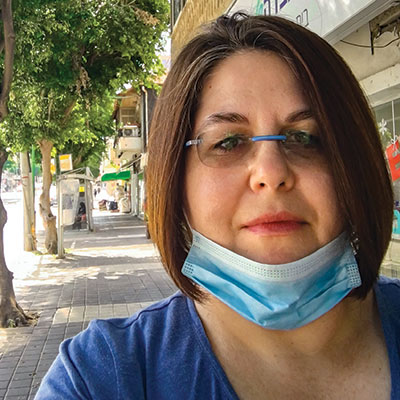
Ephrat Yovel, AICP
Right now, I'm in Israel. I was on my way to Turkey and Armenia when the work was suspended, and my flights back to the U.S. got canceled. So I went to stay with some friends and family and just got stuck here. What can you do? I've been here since mid-March.
Unfortunately, I think we should be expecting more of these types of events. If we look at the trajectory of epidemics over the last 20 years — SARS, MERS, swine flu, avian flu, Ebola outbreaks, COVID-19 — there's definitely an increasing trend. There is a cumulative effect, and there is a lot that we have all ignored, on a personal level, a political level, and definitely as a profession. Some of it has to do with the intrusion into previous untouched areas, the so-called suburban/rural/wild interface, and we're going to run into a lot more unknowns when you combine that with climate impacts. We all need better ways to address these types of issues.
In general, the more centralized countries reacted much better, and quicker than the U.S. I think we really need to have some serious strategic thinking and planning about centralization of services and supply chains within and across regions, especially under emergency conditions; and we as a profession need to start thinking of processes and frameworks to create a more unified approach that still allows us to operate within the boundaries of our decentralized system and the mandates that we have as planners. The federal government also has levers it can use, and in this crisis, isn't using them.
Funding, for me, is a big concern, especially in places with a balanced budget amendment. As planners, we need to really make a big political stand on this issue, because this is going to hurt not only immediate activities and capital investment, but also essential services for a very long time. Smaller municipalities that haven't experienced a lot of growth in the last 10 years, or are only now coming back from the last recession, if they're relying heavily on sales tax and property tax revenues, they will not be able to sustain key services under weaker economic conditions.
We should also be planning for long-term social distancing right now. Very few cities have really wide sidewalks. So, if you need to keep six feet apart from someone, one of you is walking in the road.
Now is a really good time to push reductions on road size and add bike lanes (by the way, bike use has been spiking around the world). We can pair that with street tree planting, which we know creates an environment that increases retail sales and it also reduces pollution, not to mention reduces heat islands.
Where I am, in the past week they increased the distance people could travel from their homes to 500 meters from 100 meters. We need to think about the basics people need within that walkable radius — a little open space, stores, grocery stores, playgrounds for children, etc. What about making sure that every household has access to 5G so that distance learning and work from home can occur without glitches? All of these are things that we have been talking about and have yet to enable significant change.
But everybody should be rethinking things now. There's going to be the push to "come back," and a lot of cities, especially those run by smart people, are going to try and figure out how to improve the situation so they don't find themselves in this kind of dead-end situation again. Think about it: Whatever we build now, it's going to be in place for a generation.
Meghan Stomberg is APA's editor in chief. Mary Hammon is Planning's associate editor.
Photographs taken by the subjects or those close to them.
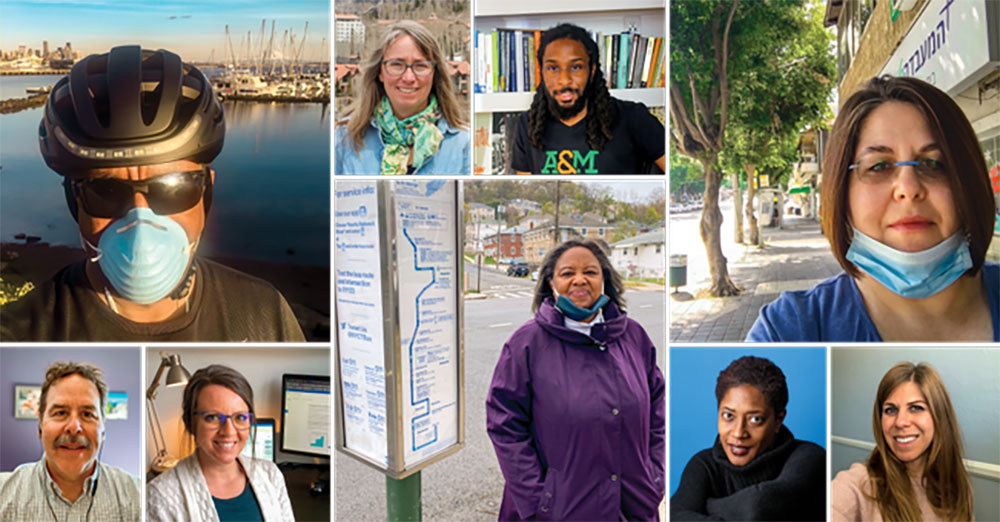
Planners from all over tell their stories of the pandemic.


